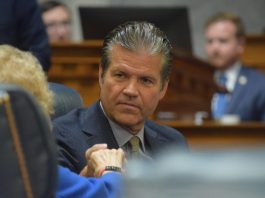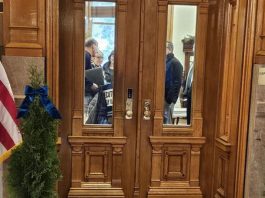Indiana Crackdown On Opioids Sparks More Pharmacy Robberies
IL for www.theindianalawyer.com
As the nation’s opioid epidemic intensified, Indiana cracked down on over-prescribing doctors and “pill mills” catering to people with addictions. The state also took aim at doctor-shopping—the practice of visiting multiple physicians to score more painkillers.
While making opioid prescriptions harder to get, the crackdown also helped spur a twofold increase in robberies of pharmacies that exacerbated the state’s standing as No. 1 in the nation for those crimes. Between 2009 and 2016, Indiana had 651 pharmacy robberies—the most in the U.S. and more than the 597 recorded by No. 2 California, which has six times the population, U.S. Drug Enforcement Administration records show.
The frequent holdups reflect a grim reality: With each regulation or law enforcement tactic, the opioid crisis quickly shape-shifts to evade new obstacles. Dealers and those struggling with addictions adapt, and the epidemic continues with little interruption.
“They’re always looking for wherever they can get their foothold. And once they do, they’re going to take advantage,” said Tom Prevoznik, a deputy chief of pharmaceutical investigations with the DEA in Arlington, Virginia.
Pharmacies and law enforcement agencies in Indianapolis, where most of the robberies have occurred, are fighting back. Pharmacy chains have installed time-release safes that won’t open for several minutes, forcing robbers to risk arrest by waiting. Signs so far are positive. Robberies in Indianapolis numbered only eight through early June, compared with 55 for all of 2016.
But some criminals responded to those efforts by traveling from Indianapolis to small suburban towns to rob pharmacies, including one in January in Elwood, about 40 miles from Indianapolis, where two robbers herded frantic employees into a bathroom after threatening them with a handgun.
Indiana’s economic makeup has made it a likely breeding ground for opioid addiction for years.
The 2008 financial crisis hit the state’s manufacturing economy hard, causing waves of layoffs. And physically demanding jobs in heavy industry have long left workers prone to injuries that could lead to prescriptions for painkillers.
“They get a legit medical prescription—and then all of a sudden it gets out of control,” said Jason Hockenberry, an Emory University professor of health policy who has studied opioid addiction. He said the state already had outsized opioid woes, related in part to its location along Interstates 65 and 70—two major corridors for illicit drugs.
Opioid addiction was behind the state’s worst-ever HIV outbreak, in 2015, an epidemic that infected more than 200 people in a rural county north of Louisville, Kentucky. Most had shared needles while injecting a prescription painkiller. That year, Indiana ranked 17th in the nation in heroin and prescription opioid overdose deaths, with 1,245 deaths per 100,000 people.
Four years ago, the Legislature directed the state’s Medical Licensing Board to draft rules requiring patients to visit their doctors periodically to keep getting prescription refills. The changes included requiring doctors to use an online database to check patients’ use of controlled substances.
But stemming easy access to opioids probably contributed to the binge of 168 robberies in 2015, more than twice the previous year’s total, as more people addicted to prescription opioids robbed stores seeking painkillers and other potent drugs, said Greg Zoeller, who was Indiana’s attorney general at the time.
The holdups—sometimes more than five a day in Indianapolis—flooded the black market with nearly 200,000 pills, primarily painkillers.
“We knew full well that if you reduce easy access, you’re going to have these kinds of consequences,” Zoeller said.
Lt. Craig McCartt, who oversees robbery investigations for the Indianapolis Metropolitan Police Department, said 85 percent of Indianapolis’ pharmacy robberies in 2015 were committed by juveniles enlisted by adult dealers offering cash and gifts to rob the stores.
Amid that crime spree, Indianapolis police teamed up with the DEA, FBI and federal prosecutors for a multi-agency approach that’s led to the indictments of 35 people, including six juveniles, in 62 of the robberies.
The state’s two largest drugstore operators, Walgreens and CVS, have also installed time-release safes at their roughly 180 Indianapolis pharmacies and added armed guards at some stores in recent years.
Indiana’s pharmacy robberies dropped to 78 in 2016, but the state still ranked second in the U.S., behind California. The latest effort targeting the robberies is a law taking effect in July that will lead to longer sentences for people who threaten violence or injure anyone during pharmacy robberies.
Ken Fagerman, a former South Bend pharmacist who wrote a book about the robberies, said the pharmacy industry should not have tolerated the heists for years and shares some blame.
“It’s regrettable that more wasn’t done sooner,” he said.



